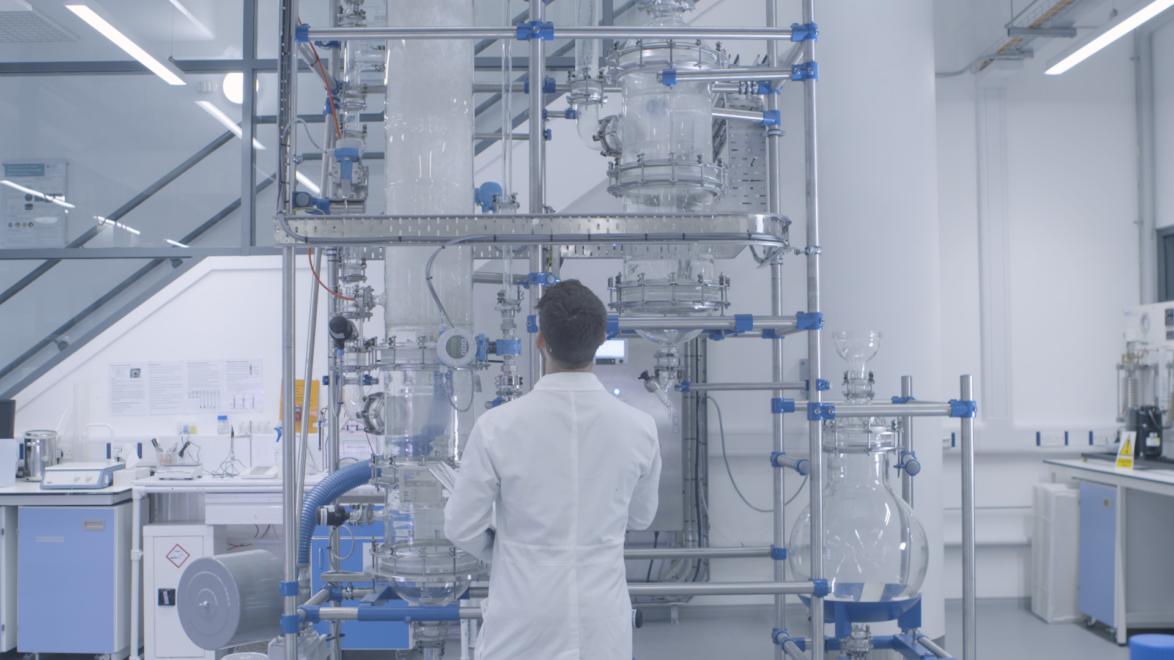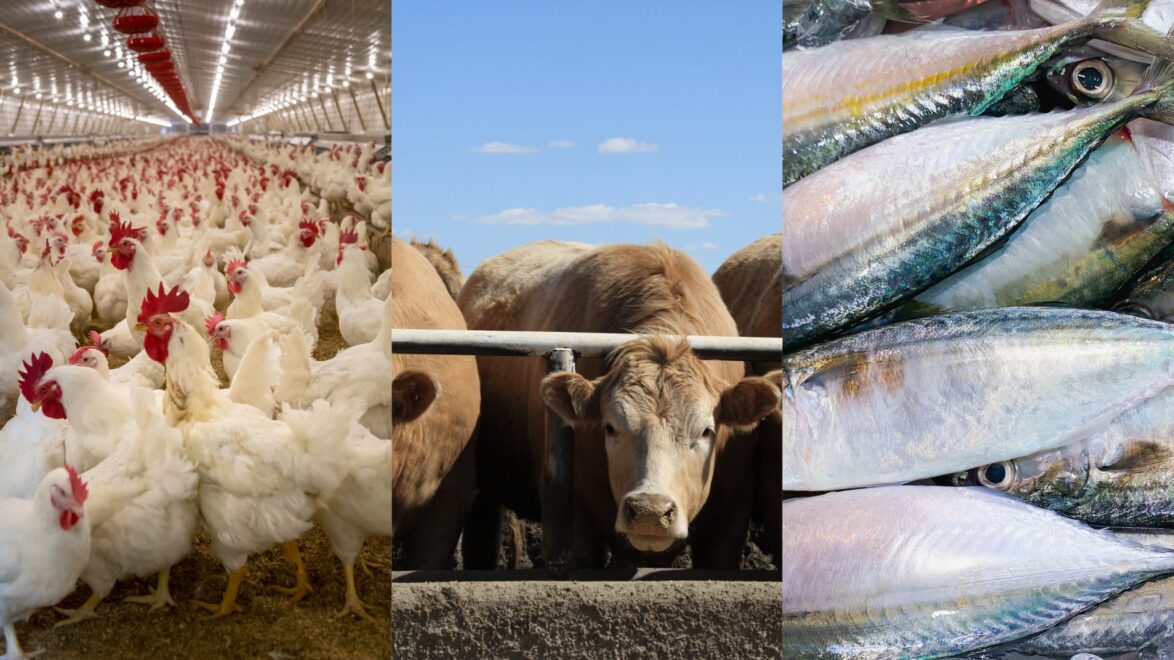Applications now open
Launch your protein scale-up into Asia with our Future Protein Programme!
Can animal proteins and alternative proteins coexist?
In line with our mission to advance innovation, sustainability, and resilience in the agrifood system, we recently launched the Future Protein Programme in partnership with Food Futures Company and Innovate UK to accelerate protein scaleup ventures with novel and disruptive solutions’ expansion into Asia.
The Future Protein Programme gives scale-ups operating in both traditional animal proteins and alternative proteins the opportunity to advance their impact towards a more sustainable and nutritious future.
The messy, nuanced discourse around the future of protein is often framed as an either/or; a fiery battle between traditional and alternative proteins. But if we understand sustainability to be a holistic concept that jointly considers the ecological, social and economic dimensions of a system for a long-lasting prosperity, it is clear we will need to invest in innovations across the protein spectrum.
We believe there is room to “disrupt” both the traditional and new proteins market. There are gaps in both sectors where innovation within technology, process, business, or product can play a decisive role in shaping the future of proteins.
Here is why we believe in catalyzing a future food system in which traditional and new proteins sustainably coexist together, and our motivation behind launching the Future Protein Programme…

Why are proteins such a big deal?
Proteins are the building blocks of life. In particular, high-quality protein containing the nine essential amino acids is required for optimal function, growth, and development in humans. Our human bodies cannot produce these amino acids, and so we must consume them through our diet.
Traditional proteins such as meat, poultry, seafood, eggs, and dairy products, have been humanity’s main source of protein for many thousands of years. These animal-based foods tend to be good sources of complete protein, meaning they contain all nine essential amino acids that the body requires.
Rising awareness of the positive health effects of proteins, coupled with population growth and economic progress in Asia, have caused the global protein demand to soar. Global protein consumption increased rapidly by 40% from 2000 to 2018, and is expected to rise by another 20% from 2018 to 2025. Traditional proteins continue to dominate this rise in demand, as it accounts for 98% of the global market.
But current modes of animal protein production, particularly at the scale they have now reached, are leading to massive problems for people and the planet. To name just a few:
- 80% of deforestation is due to forest being converted to agricultural land
- Meat accounts for 60% of all GHGEs produced by food production
- (Mis)use of antibiotics for growth promotion in intensive farming – a major contributor to antimicrobial resistance – is expected to grow by 8% from 2020 to 2030
All of these concerns have fueled the urgent need– as well as consumers’ appetites– for alternative proteins such as plant protein, mycoprotein, algae, insect, cultivated meat, and more.

We know we need more alternative proteins… So what next?
Advocates of alternative proteins argue that they require fewer resources, such as water and land, to produce, making them more sustainable and eco-friendly than traditional proteins. Additionally, alternative proteins are often touted as a more ethical choice, as they do not require animal slaughter or contribute to the negative environmental impact of factory farming. Some also argue that alternative proteins can be healthier, as they often contain more fibre and less saturated fat than traditional proteins. Overall, advocates of alternative proteins believe that these protein sources offer a viable solution to the challenges arising from traditional protein production and consumption.
But while consumer interest in the burgeoning alternative protein sector remains strong, we do not believe it will be a linear transition where people around the world will convert to or stay in an ‘only alternative protein’ diet. There are several challenges in which alternative protein producers will need to innovate, be it from advancing the technology category, consumer adoption or value positioning in the market :
- Price parity: It is made known that consumers are often not prepared to pay a premium for alternative protein products that offer only taste parity with animal-based products. More innovation around the tech is needed to bring costs down and offer a compelling case for consumers’ wallets.
- Cultural consciousness is often a missing ingredient in alternative proteins. Beyond mere sustenance, traditional proteins are often considered more familiar and comforting to consumers, and are often associated with cultural and culinary traditions. To win consumers over, alternative protein producers will need to develop culturally relevant, exciting, easily accessible and ‘delicious’ alternative protein products that suit the palates of their target markets.
- Nutritional value: Animal proteins such as beef, chicken, and fish are considered “complete” proteins, meaning they contain all of the essential amino acids that our bodies need. Alternative protein producers will need to balance nutritional profiles of their products to make them competitive with the amino acid profile of animal proteins.
Overall, diets come with strong personal and cultural ties that may incur significant resistance to changes. Any large-scale transition of consumer diets should consider these factors, including changes in price, food access and availability to mitigate adverse impacts on low-income and food-insecure households. How will new proteins “position” themselves to appeal to the various consumer personalities?

But there is still a place for animal proteins. So how might we improve production processes?
Most of the current discourse on protein depicts a negative connotation on livestock production. But, hold that thought. Some forms of livestock production contribute to sustainability through use of uncultivable land for food production, preservation of biodiversity, and carbon sequestration in soil and biomass.
This begs the question: What options exist for reducing the carbon footprint of the livestock industry, how effective might they be, and what could be done to encourage their implementation?
Given traditional proteins account for 98% of the global market, unlocking solutions to make the value chain more sustainable and impact focused could deliver more rapid solutions that we so desperately need to see in our current food system in the short term. More can be done to support this transition to climate smart farming.
Livestock contributes 40% of the global value of agricultural output and supports the livelihoods of almost 1.3 billion people. They form an integral part of mixed farming systems, where they help raise farm productivity and provide a steady stream of food and revenue for households. Particularly in southeast Asia, this plays a central role in smallholder farmers’ livelihoods. As we look to transitioning to new proteins, we also need to consider the transitioning of smallholder farmers and what that entails for a “just” food protein food system.
The global meat market is worth close to $1 trillion and continues to grow rapidly. Millions of people globally are economically dependent on this industry, across the value chain. We need to be aware of the socio-economic challenges these groups of people face and how their livelihoods are affected by major industry shifts.
It’s time to accelerate all protein transformations
Many innovations that address the aforementioned challenges already exist– and need the right support to scale across different markets in order to create the biggest positive impact from an environmental, social, and governance perspective.
That is why we are launching the Future Protein Programme. This is our first, bold commitment to invest and accelerate all protein transformations by creating a movement to bring together key players across the value chain to deliver game changing technologies into Asia.
We want to unlock the potential of technology and innovation in making traditional proteins more sustainable and enable traditional protein products to be more nutritious for consumers. We also want to help entrepreneurs overcome the barriers of adoption of new proteins and make it more accessible.
To learn more about how the programme achieves this, please visit our programme webpage and download our programme brochure.
If you share our mission, we hope you’ll join us in accelerating and investing in protein transformation. By working together, we can create a protein production system that is ecologically, socially, and economically sustainable for generations to come!

Shape the future of protein with us!
Join the Future Protein Programme! The application form takes 5 minutes.
Add our impact to your inbox
"*" indicates required fields
